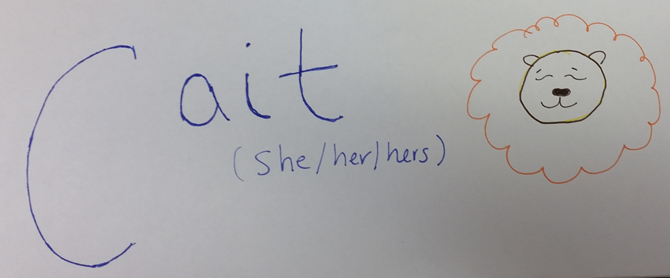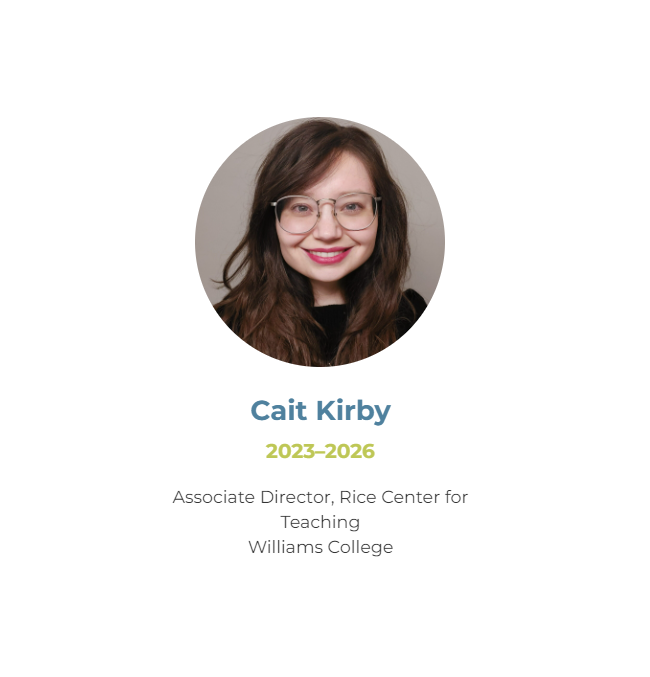Cait S. Kirby, PhD
I am the Associate Director of the Williams College Rice Center for Teaching.
I am a biologist with an interest in genetics, especially mitochondrial DNA and sex chromosomes.
I am an academic developer, learner, and teacher with interests in STEM identity, belonging, metacognition, and disability.
I promote inclusion in STEM and higher ed by facilitating belonging and creating accessible education resources.
SERVICE

During the first class period I have students generate name tents so that I can call them the correct name and pronouns. These name tents also contain an important or representative image to the student. Often, the students tell me a story about the image, which helps me to remember.
Promote belonging.
Faculty often come to me with particular challenges: the same few students answer their questions, students don't verbally engage in discussions with each other, group projects seem to devolve, to name just a few. In my experience, strategies that aim to promote student belonging often increase student engagement. Importantly, there is no one solution that facilitates feelings of belonging for all students; many small belongingness interventions can add up. One strategy for promoting belonging I like to use (especially in STEM courses) centers around students seeing each other contributing to the discussion. It is important that students see a variety of their peers sharing during conversation, and to lower the barrier to entry in entering discussions, I often ask students to share something only mildly tangential to the course topic (such as a favorite fictional scientist or their favorite animal). This gets students sharing early on, which makes it more likely students will continue sharing during the class.

A Google Jamboard brainstorming session around belonging and inclusion in the field of educational development.
Promote inclusion.
In the field of educational development, some folks are explicitly and implicitly included more than others. It is important to me to promote active, intentional inclusion of all kinds of current and future educational developers. To this end, I am working on projects aimed at investigating and rectifying exclusive practices in educational development. Within these projects, I am asking questions about how we are ensuring a diverse group of educational developers, which will help support the ever-increasingly diverse faculty and student populations.

My POD Core Committee entry on the POD Network website.
Promote accessibility.
I have been involved in the POD Network organization since 2020. During my time at POD, I co-founded the Disabled Affinity Group (DAG) and the Accessibility and Disability Special Interest Group (SIG). Both groups aims to promote accessibility in educational development. DAG aims to provide a space for disabled educational developers to find support, while the SIG works to discuss and strategize around disability and accessibility topics in educational development and higher ed. Additionally, I serve on POD Core Committee (Board of Directors).